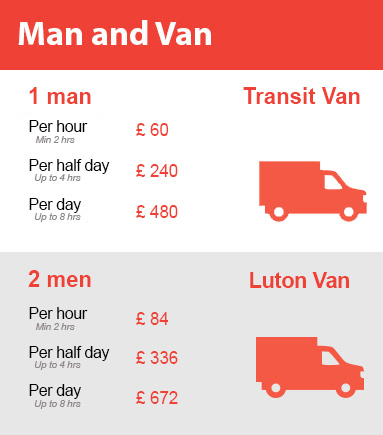Packing Like a Pro: Essential Advice for Moving Day
Posted on 17/06/2025
Packing Like a Pro: Essential Advice for Moving Day
Moving day can be both exciting and overwhelming. Whether you're relocating across town or to a new city, mastering the art of packing is crucial for a smooth, stress-free move. This in-depth guide explores proven tips and techniques for efficient packing, ensuring your belongings stay safe and your moving day runs seamlessly. Read on for expert advice, actionable strategies, and comprehensive checklists that will help you pack like a pro!
Why Efficient Packing Matters
Packing isn't just about tossing your items into boxes. Proper packing ensures the safety and organization of your belongings, making both the move and the unpacking process more manageable. Here are a few reasons why efficient packing is essential:
- Reduces risk of damage: Well-packed boxes protect fragile and valuable items during transport.
- Saves time: A systematic packing strategy helps speed up both moving and unpacking.
- Lowers moving costs: Proper organization can cut down on the number of trips or amount of packing materials needed.
- Minimizes stress: Knowing where everything is--and that it's safe--helps you stay calm on moving day.

Before You Start: Smart Preparations for Moving Day
Preparation is the cornerstone of efficient moving day packing. Follow these preparatory steps to get off on the right foot:
1. Declutter and Downsize
The first rule of packing like a pro is to move only what you want to keep. Take this opportunity to declutter:
- Sort every room: Separate items into 'keep', 'donate', 'sell', and 'discard' piles.
- Be ruthless: If you haven't used something in over a year, consider letting it go.
- Organize a garage sale or donate: Lightening your load saves time, money, and space.
2. Gather Quality Packing Supplies
Invest in high-quality moving and packing supplies to ensure the safety of your possessions:
- Sturdy cardboard boxes (in various sizes)
- Packing tape and dispenser
- Bubble wrap, packing peanuts, and foam sheets
- Markers and labels
- Stretch wrap for furniture
- Specialty boxes (wardrobe boxes, dish packs, etc.)
- Old blankets or moving pads
3. Create a Packing Timeline
Break down your packing task by setting a realistic timeline. Use a packing schedule so you don't end up rushing at the last minute.
- 4 Weeks Out: Start with non-essential items--seasonal decor, books, or rarely used kitchen tools.
- 2 Weeks Out: Pack less frequently used items. Confirm moving arrangements and finalize supply needs.
- 1 Week Out: Focus on everyday items, leaving only daily essentials until the final days.
- Moving Day: Pack your essentials bag and double-check all rooms.
The Ultimate Step-by-Step Guide to Packing Like a Pro
Follow this step-by-step approach to make the moving day packing process seamless and efficient.
1. Start Early and Tackle One Room at a Time
Begin packing as early as possible. Focusing on one room at a time prevents confusion and keeps the process organized.
- Label each box clearly with its room of origin and a brief description of its contents.
- Pack items together that will be placed in the same room in your new home.
- Keep small parts and hardware in labeled plastic bags taped to relevant items (like screws for furniture).
2. Master the Art of Box Packing
Not all boxes are created equal! Here are packing best practices for various items:
- Heaviest items on the bottom: Always place heavier items in the box first.
- Don't overload: Make sure boxes can be comfortably lifted and won't burst open.
- Fill gaps: Use packing paper or bubble wrap to prevent items from shifting.
- Seal boxes well: Use strong packing tape to reinforce the bottom and top of each box.
3. Protect Fragile and Valuable Items
Handle fragile items with extra care:
- Wrap each item individually: Use bubble wrap or packing paper.
- Use dish pack boxes: These are thicker and offer more protection for glassware and plates.
- Label as fragile: Clearly mark boxes with fragile items.
4. Optimize the Packing of Clothing and Linens
Here's how the professionals handle clothes and soft goods:
- Use wardrobe boxes: Transfer hanging clothes directly--no folding needed!
- Pack in suitcases: Rolling your clothes saves space and prevents wrinkles.
- Wrap breakables in linens: Save on packing materials by using towels and blankets to protect fragile items.
5. Keep Essential Items Handy
On moving day, you'll need certain items of immediate use. Prepare an "essentials box" for each family member with:
- Medications
- Important documents
- Chargers
- Toiletries
- Snacks and drinks
- A change of clothes
6. Label Everything Diligently
Comprehensive labeling is the hallmark of professional moving day packing:
- Room name and contents: Write clearly on at least two sides of every box.
- Color code boxes: Consider colored tape or stickers for quick identification.
- List fragile or heavy items: Mark these clearly to guide the movers.
Expert Packing Strategies for Moving Day Success
Disassemble Large Furniture
Take apart bed frames, tables, and shelves ahead of time. Keep screws, bolts, and small parts in labeled bags affixed to each furniture piece.
Take Photos for Easy Reassembly
Snap photos of wiring setups for electronics or complex furniture. This visual reference makes reassembly at your new home much easier.
Utilize All Available Space
Maximize every box and bag: fill suitcases with books, store shoes inside clean pots, or use laundry baskets for odd-shaped items.
Communicate With Movers
If hiring professional movers, walk them through your home and point out fragile or valuable items. Share your labeling system to help them place boxes in the correct rooms.
Important Moving Day Packing Mistakes to Avoid
- Last-minute packing: Rushing the night before leads to forgotten essentials and poorly packed boxes.
- Not labeling boxes: This makes unpacking a nightmare and increases the risk of breakage.
- Overpacking boxes: Overly heavy boxes can break or cause injury.
- Skipping the essentials bag: You'll want immediate access to toiletries, chargers, medications, and snacks upon arrival.
Special Considerations: Packing Unique and Valuable Items
Packing Electronics
- Use original boxes if available. Otherwise, cushion well with bubble wrap.
- Bundle cords carefully and tape them to the relevant electronic device.
- Backup important files before your move, in case of loss or damage.
Packing Art, Antiques, and Heirlooms
- Consult a professional packer for highly valuable items.
- Use specialty boxes and packing materials designed for art and antiques.
- Insure valuable items before the move.
Moving Day: The Final Checklist
- Double-check each room and closet for forgotten items.
- Protect your floors by laying down old blankets or moving pads.
- Meet your movers and review your labeling system.
- Supervise the loading process and ensure fragile boxes are stacked safely.
- Take a final walkthrough before leaving your old home.

Unpacking Like a Pro: Tips for Settling In Quickly
- Place boxes in the correct rooms as marked.
- Unpack essentials bags first for immediate comfort.
- Set up beds and bathrooms early to ensure a restful first night.
- Pace yourself--unpack one room at a time for less overwhelm.
Conclusion: Packing Like a Pro Makes All the Difference on Moving Day
Moving doesn't have to be chaotic or stressful. By following these detailed, practical, and expert-backed tips for moving day packing, you'll safeguard your valuables, keep your move organized, and start life in your new home on the right foot. Remember to prepare early, pack methodically, and keep the essentials accessible. With this comprehensive guide, you're ready to pack like a pro and enjoy a smooth transition to your new home!
Happy moving--and welcome home!





